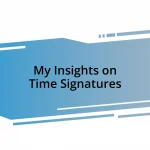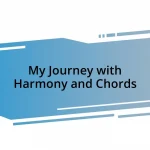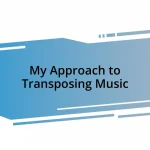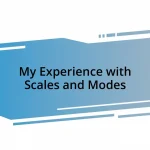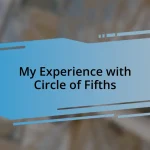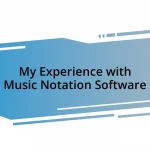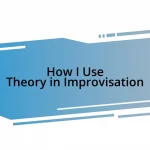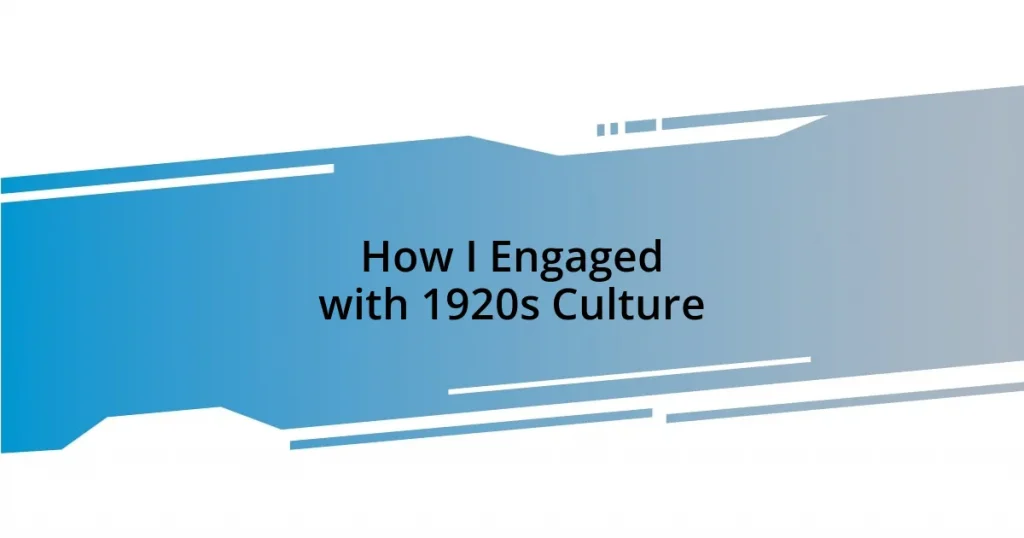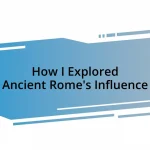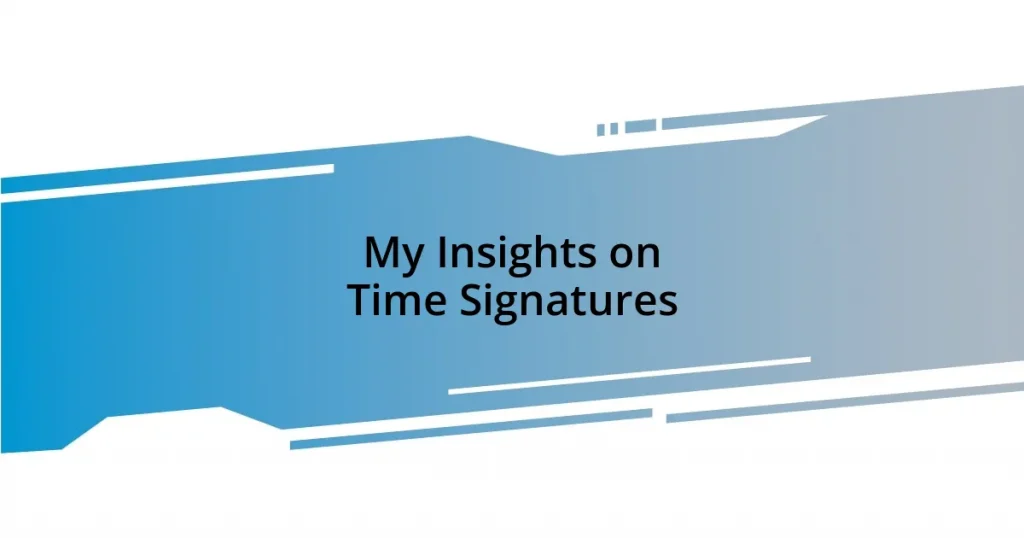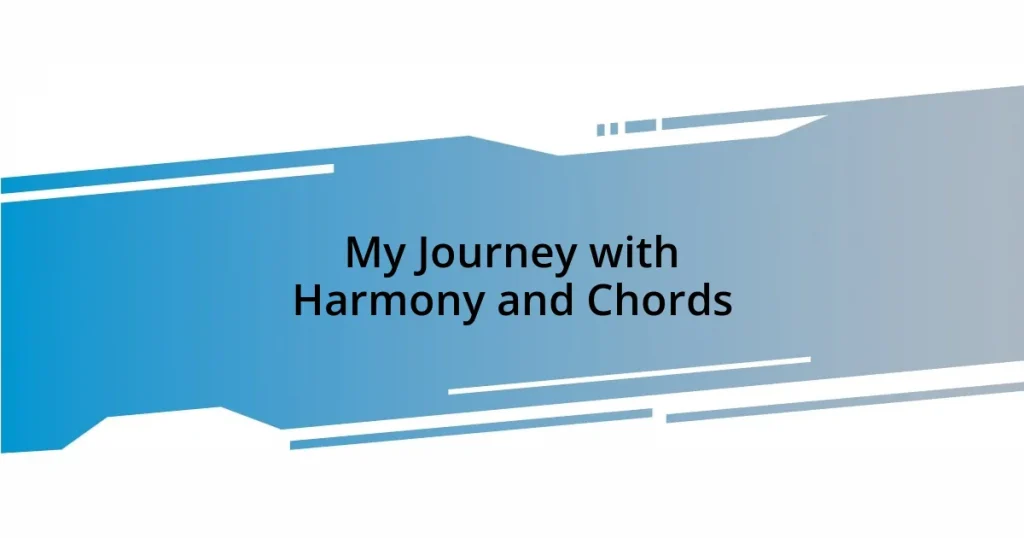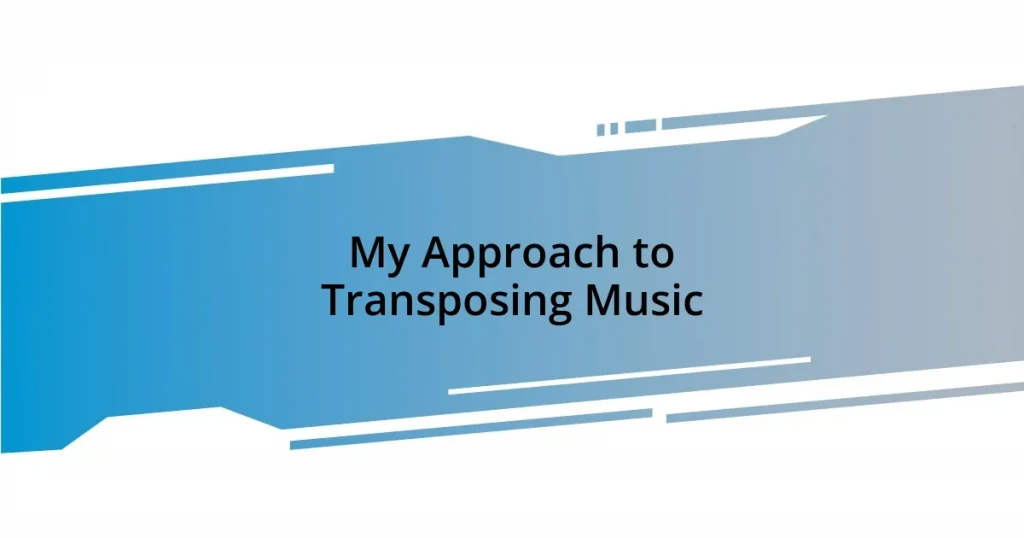Key takeaways:
- The 1920s marked significant societal changes, particularly for women, with the emergence of flappers symbolizing independence and self-expression.
- Jazz music played a crucial role in the cultural landscape, uniting diverse communities and serving as a soundtrack for a generation seeking freedom and rebellion.
- Fashion during the 1920s was revolutionary, with styles like flapper dresses and cloche hats reflecting a shift from traditional norms and encouraging individuality.
- Participating in events themed around the 1920s allows individuals to connect with the energy and creativity of the era, fostering a sense of community and shared history.
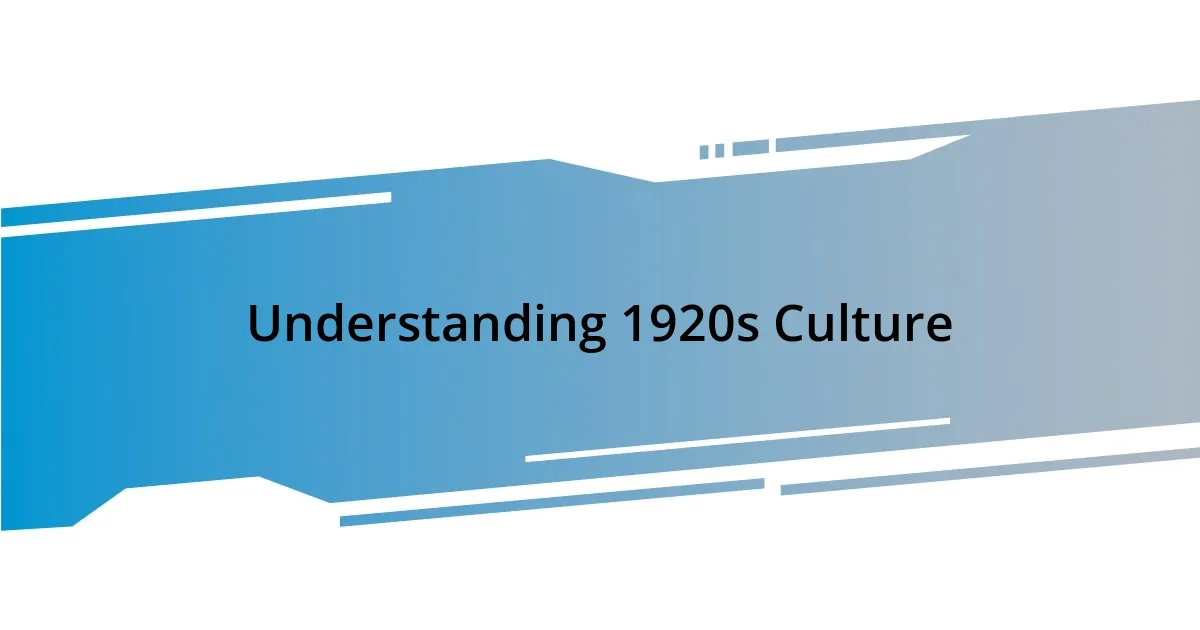
Understanding 1920s Culture
To truly grasp 1920s culture, I found it essential to immerse myself in its vibrant expressions—whether through literature, jazz music, or the bold fashions of the time. I remember leafing through the pages of F. Scott Fitzgerald’s “The Great Gatsby,” where the lavish parties and the spirit of the Jazz Age leaped off the page, inviting me to understand the decade’s allure and excess. Have you ever felt transported to another era through a book? That’s precisely how it felt, as if I could almost hear the strains of a saxophone playing in the background.
The 1920s represented a seismic shift in social norms, particularly for women. I was struck by the image of flappers—young women who challenged traditional roles with their audacious clothing and liberated spirits. This wasn’t just about fashion; it symbolized a new wave of independence and self-expression. Can you imagine the excitement and fear that came with such a transformation? For many, including my grandmother, it was the very essence of breaking free, a symbol that still resonates today.
Moreover, the era’s fascination with modernity, technology, and youth was palpable. I stumbled upon photographs of bustling city streets filled with vintage cars and throngs of people, and it made me appreciate the thrill of progress. It begged the question: how does innovation shape our identity? The energy of the 1920s was infectious, and it left me pondering how every decade, including our own, reflects the dreams and conflicts of the time through its culture.
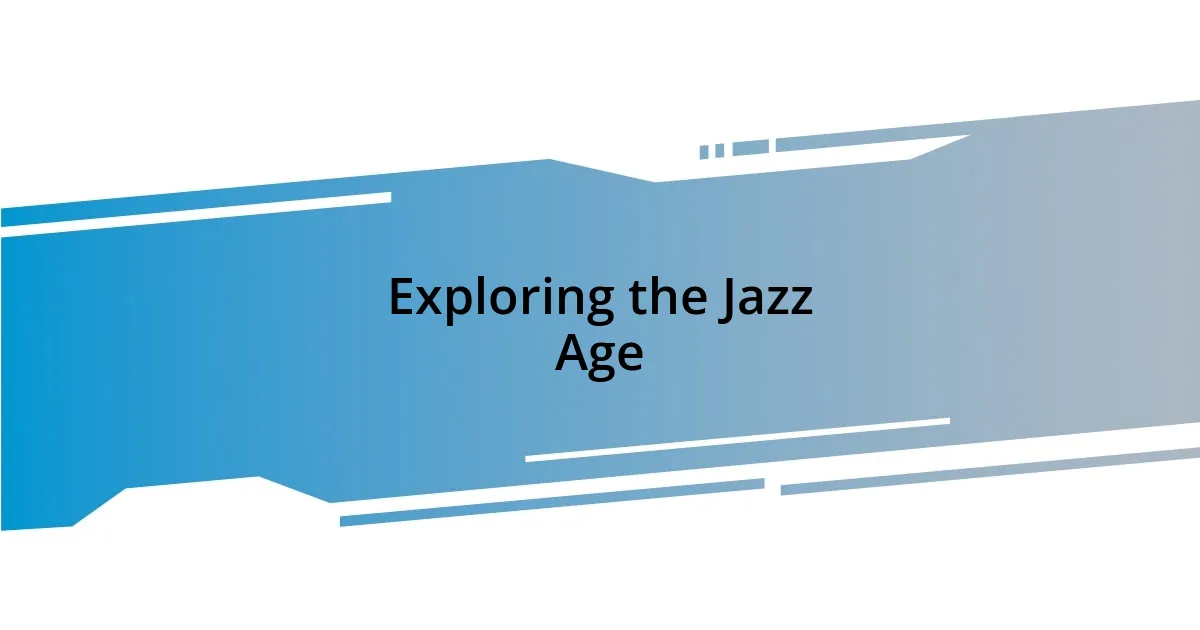
Exploring the Jazz Age
The Jazz Age was a vibrant tapestry of sound, rhythm, and energy that resonated deeply with me. I recall listening to classic records of Louis Armstrong and Duke Ellington in my living room, enveloped in melodies that sparked a sense of freedom and joy. The music wasn’t just background noise—it felt like an invitation to the dance floors of speakeasies, where the lively atmosphere was thick with excitement and rebellion. It’s fascinating to think how jazz became the soundtrack of a generation trying to break free from the constraints of the past.
- Jazz emerged as a powerful expression of cultural change.
- Dance crazes like the Charleston and the Black Bottom captivated many.
- The genre brought together diverse communities, promoting social unity despite racial divides.
- Influential venues like the Cotton Club showcased African American talent to predominantly white audiences.
- Jazz music sparked creative movements, influencing literature, art, and fashion.
The energy of those musicians practically radiated from the vinyl, urging me to embrace spontaneity and creativity. I often imagine the intoxicating atmosphere of those late-night performances, where every note felt like a celebration of life itself. It’s a powerful reminder that music can serve as both a personal escape and a collective experience, uniting people from all walks of life—something I strive to replicate in my own musical interests today.
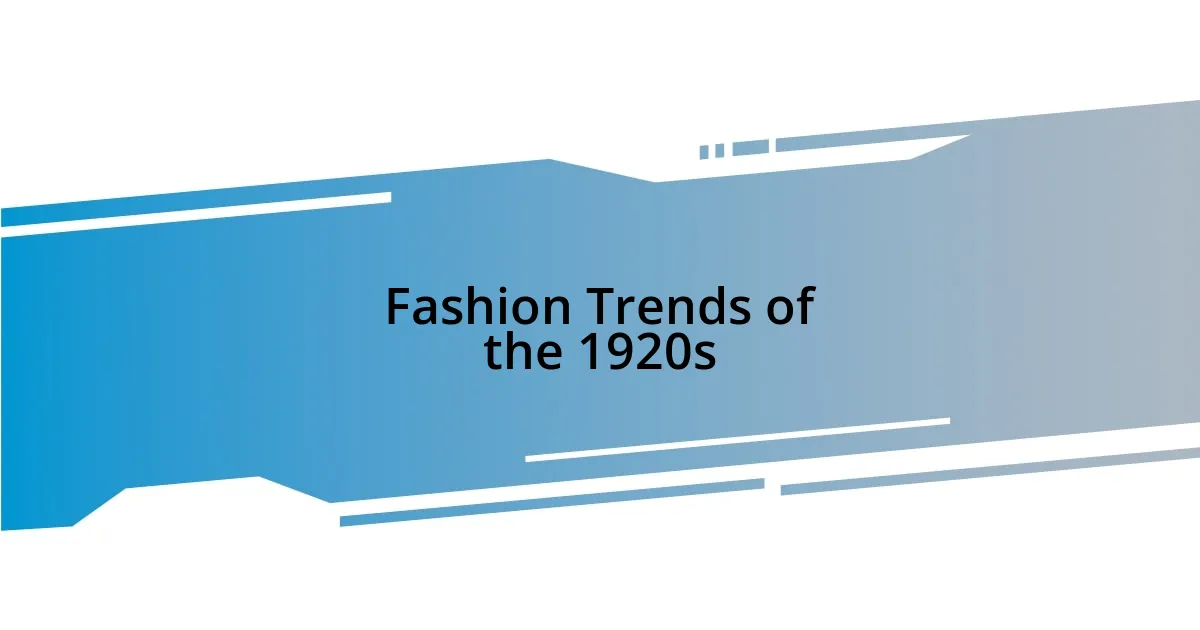
Fashion Trends of the 1920s
Fashion in the 1920s was nothing short of revolutionary. I still remember flipping through old Vogue magazines that highlighted the bold, elegant styles of the flapper era. The drop-waist dresses, adorned with fringe and sequins, captured a sense of joy and freedom. It was a time when women traded corsets for comfort, signifying a shift in societal norms. Have you ever found a piece of clothing that instantly made you feel empowered? That’s how those dazzling dresses seem to sparkle with the triumph of a generation embracing its femininity.
Accessories also played a vital role in defining 1920s fashion. I was particularly fascinated by cloche hats, snugly fitting hats that framed women’s faces beautifully. They were more than just a fashion statement; they symbolized a break from tradition. People began expressing individuality through jackets embellished with beading and men donned stylish suits paired with bow ties. There was a palpable excitement in how fashion encouraged self-expression. It made me realize that outfits are not only about aesthetics but also about telling our own stories.
To encapsulate some key fashion elements of the 1920s, I’ve created a comparison table that highlights significant styles of that time:
| Style Element | Description |
|---|---|
| Flapper Dresses | Characterized by a loose fit, drop waist, and often embellished with fringe and sequins. |
| Cloche Hats | Close-fitting hats that became popular among women, often accessorizing the flapper look. |
| Men’s Suits | Well-tailored suits with wide lapels, often worn with bow ties and stylish shoes. |
| Jazz-Inspired Styles | Bold patterns and colors influenced by the lively music scene, reflecting a carefree attitude. |
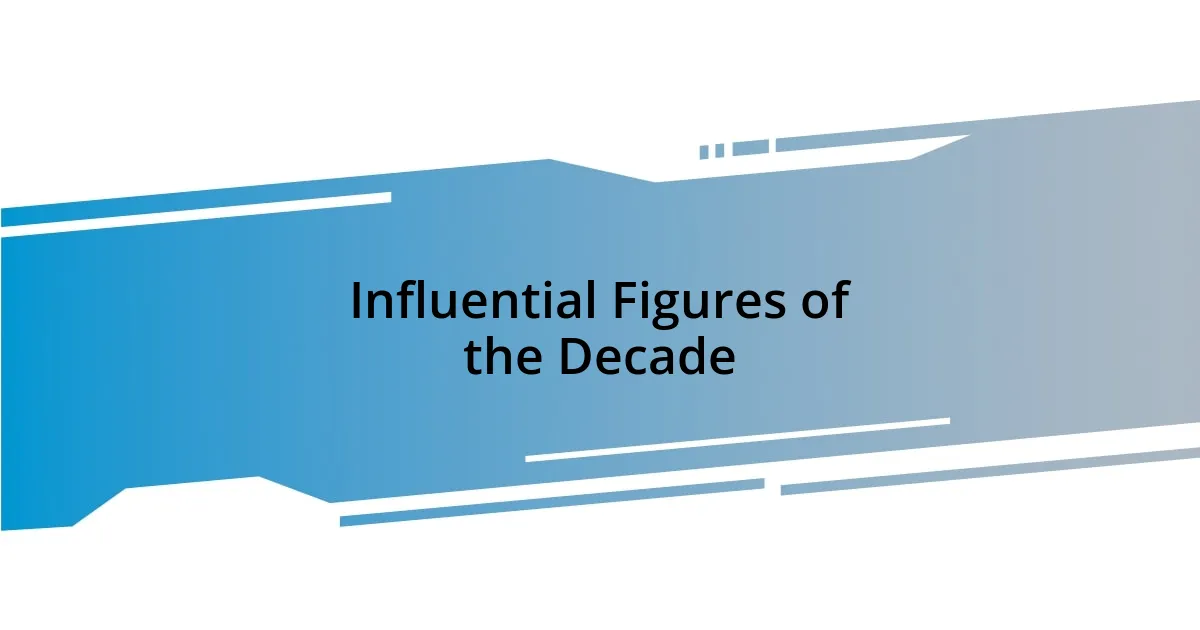
Influential Figures of the Decade
As I delve into the influential figures of the 1920s, I can’t help but feel a connection to the indomitable spirit of people like F. Scott Fitzgerald. The way he penned “The Great Gatsby” captivated me; every page was soaked in the glitz and tragedy of the Jazz Age. Have you ever read a book that transported you to another time? Fitzgerald’s ability to weave tales of romance and disillusionment perfectly illustrated the complexities of life in a rapidly changing society.
Meanwhile, I often find myself inspired by the powerful voice of Langston Hughes, who emerged as a leading figure in the Harlem Renaissance. His poetry struck a chord with my own experiences of seeking identity and belonging. I remember reciting “The Negro Speaks of Rivers,” feeling a profound connection to a history that isn’t just personal—it’s collective. Hughes championed the idea of embracing one’s heritage, providing a raw authenticity that resonates even today.
Then there’s Coco Chanel, a true game-changer in fashion and women’s rights during the decade. I vividly recall flipping through a biography that highlighted her revolutionary approach to clothing. Chanel’s designs encouraged women to shed their restrictive garments and embrace a more liberated style. Doesn’t it fascinate you how one person’s vision can shift societal norms? Her legacy is a reminder that fashion is more than fabric; it’s a reflection of a movement toward freedom and self-expression.
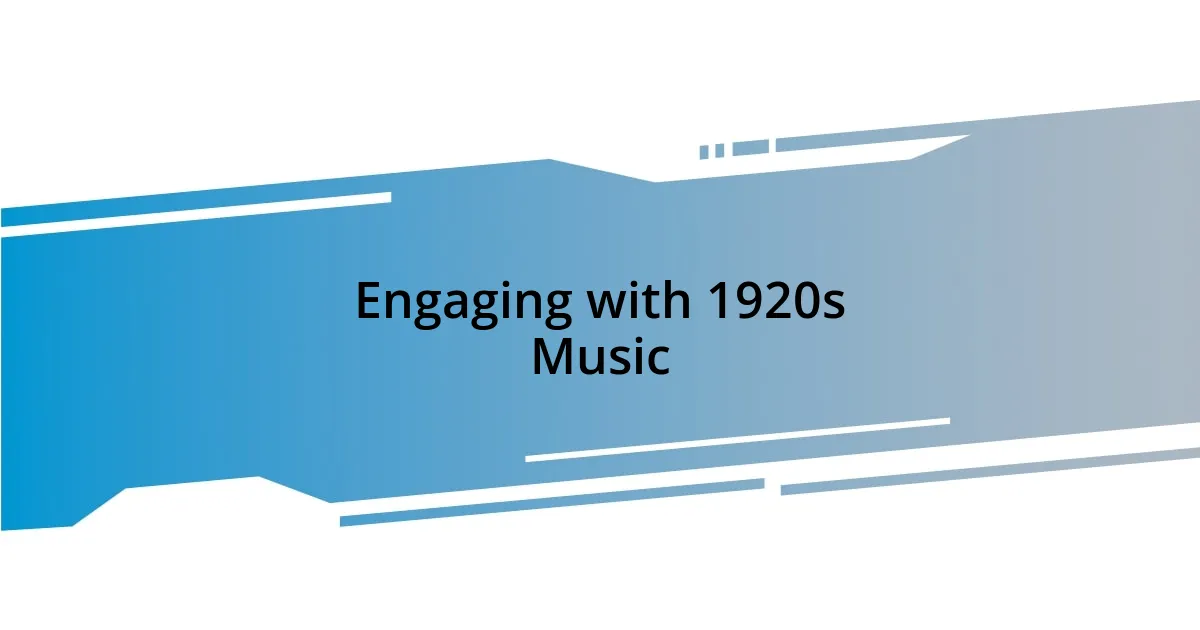
Engaging with 1920s Music
Engaging with 1920s music is like stepping into a vibrant world where each note tells a story. I remember the first time I heard Louis Armstrong’s trumpet—a true revelation! His contagious energy and improvisation made me think about how music can transcend time, connecting us with emotions and experiences from long ago. It’s fascinating how jazz was not just a genre but a cultural movement, representing a sense of freedom and rebellion that defined the roaring twenties.
While exploring the music of the era, I found myself captivated by the lively rhythms of the Charleston. It’s hard not to feel a surge of joy when you hear that infectious beat—like it beckons you to dance! I tried learning the steps, and although my feet stumbled more than they glided, the sheer fun of it reminded me that joy is often found in embracing the moment, not in perfection. Have you ever experienced music that made you want to move, even when you felt a little unsure? That’s the spirit of the 1920s, where the music compelled people to live in the moment.
Listening to 1920s music has also deepened my appreciation for the Jazz Age’s social dynamics. I often think about how artists like Bessie Smith infused their experiences into their songs, giving voice to struggles and triumphs of the time. It’s a powerful reminder that music isn’t just entertainment; it’s a way to understand and empathize with the past. I remember discussing Smith’s impact with a friend, marveling at how her raw emotion could resonate across generations. Have you ever connected with a song on such a deep level? It’s moments like these that make me realize the lasting legacy of 1920s music—it invites us to listen, learn, and connect with each other through the tapestry of shared human experience.
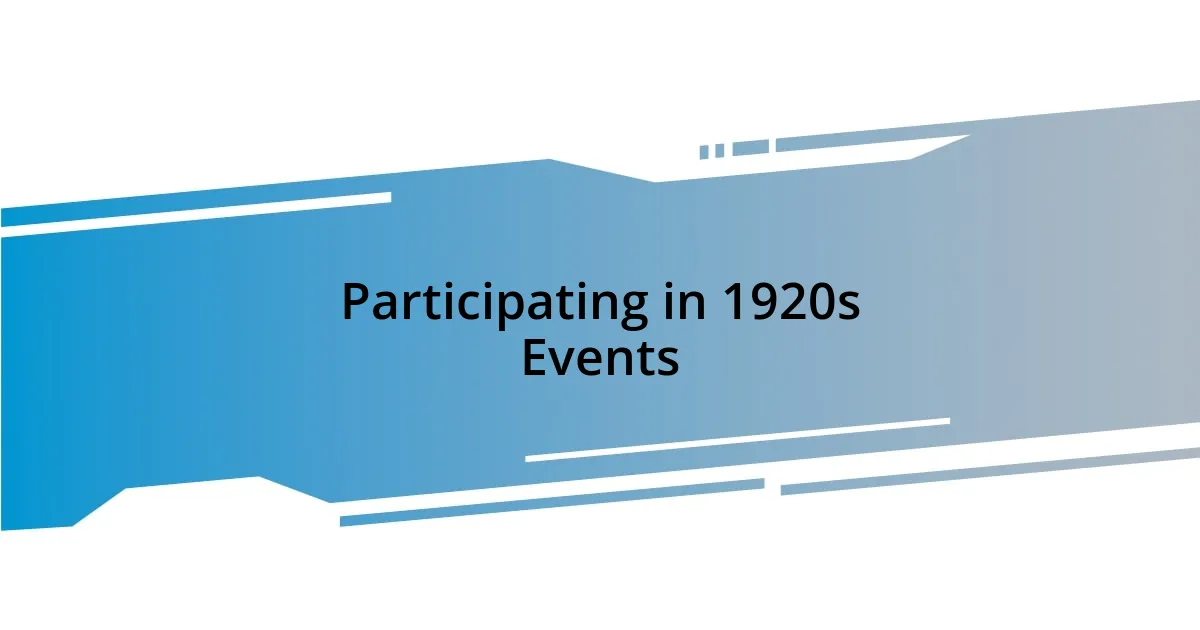
Participating in 1920s Events
Participating in 1920s events transports me to an exhilarating era where the air buzzes with anticipation. I recently attended a themed party inspired by the Great Gatsby, and let me tell you, the moment I stepped through the door, I felt like I was in a different time. The flapper dresses and dapper suits took me back, and as I sipped on a classic gin fizz, I couldn’t help but marvel at how much effort people put into evoking that 1920s glamour. Doesn’t it feel invigorating to see history come alive in such a tangible way?
In another instance, I joined a local speakeasy event where jazz music flowed as freely as the drinks. It was fascinating to witness how people communicated through dance, laughter, and music—just like they did in the roaring twenties. I remember spinning around the dance floor, letting the rhythm of the live band guide my movements. The atmosphere was electric! It reminded me that participating in such events allows us to capture the essence of an era. Have you ever felt an instant connection with a time and place simply by immersing yourself in its culture?
One night, I even attended a silent film screening featuring Charlie Chaplin, which sparked a deep appreciation for the art of storytelling without words. Watching the audience react to every comedic mishap brought back a sense of community that’s often lost today. It’s incredible how these gatherings can create a shared experience that resonates with everyone present. I left that evening feeling inspired, as though the spirit of the 1920s—its creativity and zest for life—had woven itself into my own. How often do we really take the time to engage with history like that, feeling its pulse through our own hearts?
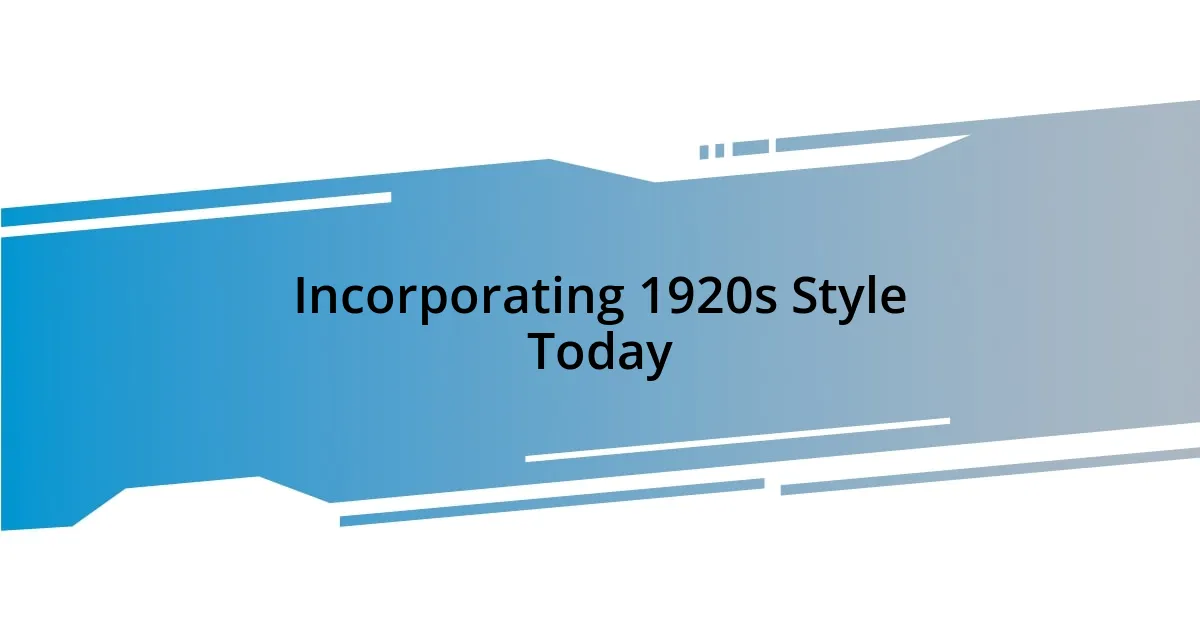
Incorporating 1920s Style Today
Incorporating 1920s style into my daily life has become a delightful adventure. I’ve recently started adding vintage accessories, like a stylish cloche hat and beaded clutches, to my modern outfits. When I wear these pieces, I can’t help but feel a touch of glamour and confidence, reminiscent of the fearless flappers who redefined femininity. Have you ever donned an accessory that made you feel like you belonged to another time?
Another fun way I’ve embraced the 1920s aesthetic is through my home décor. I decided to decorate my living space with Art Deco elements—think geometric patterns, metallic accents, and bold colors. One afternoon, while browsing through vintage shops, I stumbled upon a stunning chandelier that seemed to scream “roaring twenties.” Installing it was a transformative moment; every time I walk into my living room, I instantly feel a vibrant energy that inspires creativity. Isn’t it fascinating how our surroundings can reflect a different era and influence our mood?
Even in my choice of evening wear, I’m drawn to styles that echo that fabulous decade. I love slipping into an elegant fringe dress now and then for special occasions. Each time a glimmering bead catches the light, it feels like I am channeling the spirit of the Jazz Age, celebrating not just the fashion but the heart of the culture. Whenever I receive compliments, I can’t resist sharing a piece of the story behind the style—connecting others to the rich tapestry of the 1920s. How can a simple outfit spark such intriguing conversations and connections? It’s these moments of shared history that truly bring the past alive in our modern lives.

